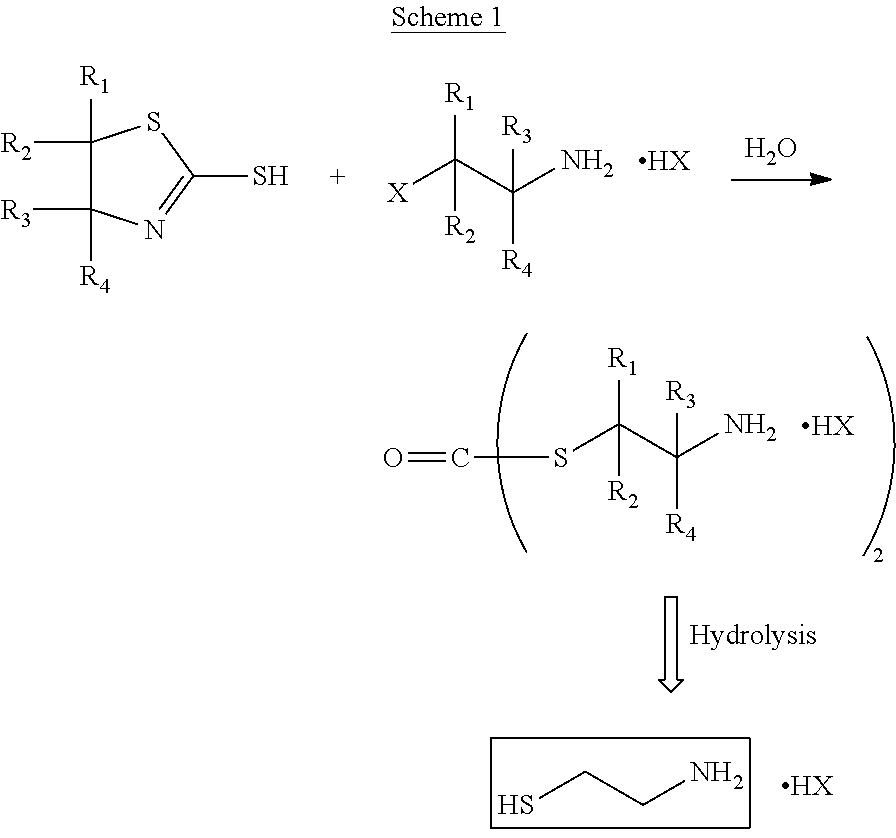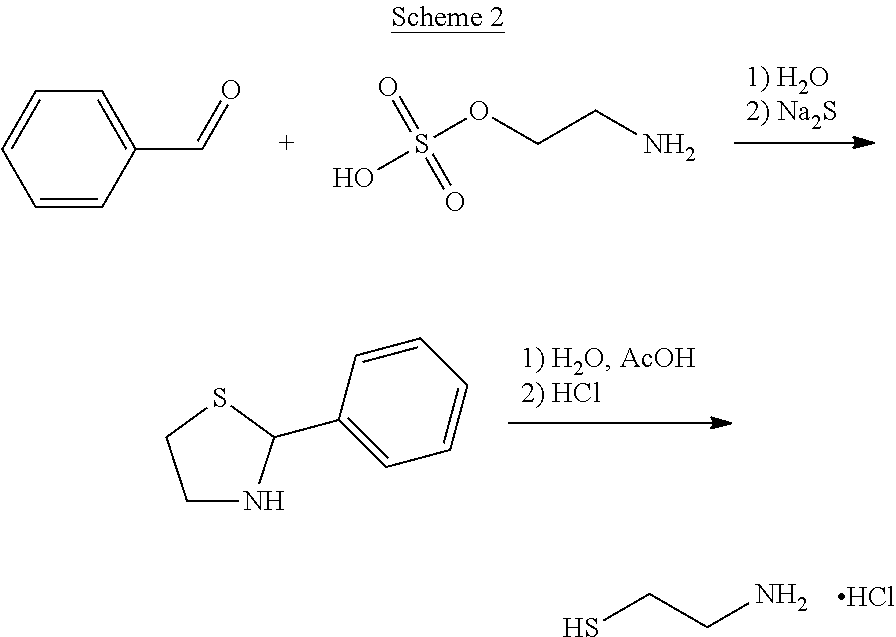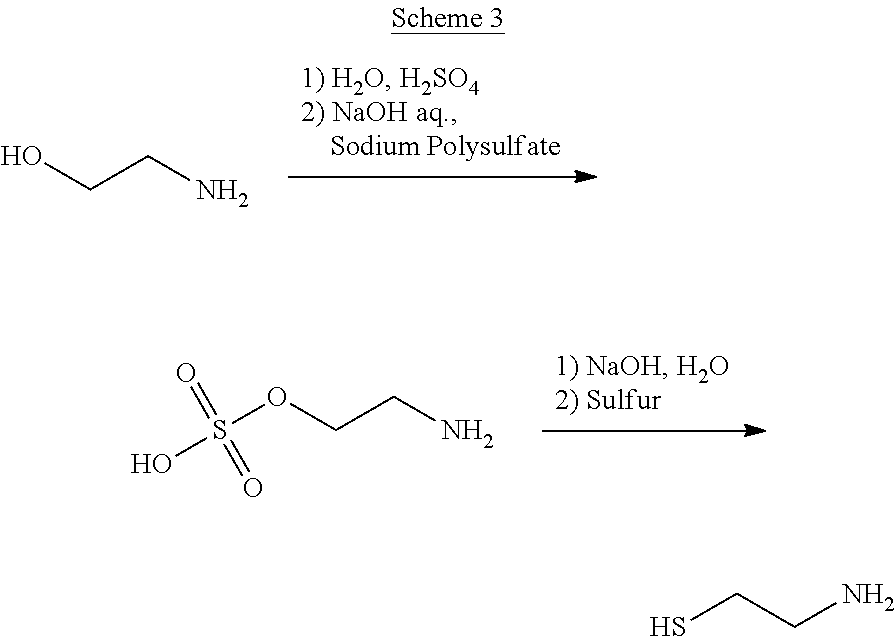Method for the purification of cysteamine
a cysteamine and purification method technology, applied in the field of cysteamine purification methods, can solve the problems of laborious procedures, toxic reagents, and no use of organic solvents
- Summary
- Abstract
- Description
- Claims
- Application Information
AI Technical Summary
Benefits of technology
Problems solved by technology
Method used
Image
Examples
example 1
Purification of Cysteamine Hydrochloride from Cystamine
[0033]In a 3-necked flask equipped with stirrer, cysteamine hydrochloride with about 2.5% of cystamine (4 g, 0.035 mol) was dissolved in demineralized water (12 ml) and dithiothreitol (1.09 g, 0.007 mol, 0.2 eq.) was added. The solution was left under stirring for 15-18 hours and controlled by HPLC. Content of residual cystamine 0.13%. Cysteamine hydrochloride was isolated by distilling water under vacuum and reintegrating with butanol (15 ml). After being left to crystallize under stirring, the precipitate was filtered, washed with butanol, dried at 50° C. under vacuum until reaching a constant weight. 3.6 g of purified cysteamine hydrochloride were obtained with a content of cystamine 0.15%.
example 2
Purification of Cysteamine Bitartrate from Cystamine
[0034]In a 3-necked flask equipped with stirrer cysteamine bitartrate with about 2.5% of cystamine (5 g, 0.022 mol) was dissolved in demineralized water (12 ml) and dithiothreitol (0.88 g, 0.006 mol, 0.26 eq.) was added. The solution was left under stirring for 15-18 hours and controlled by HPLC. Content of residual cystamine <0.10%. Cysteamine hydrochloride was isolated by slow addition of isopropanol (70 ml). After precipitation, coiling at 10° C., filtration and washing with isopropanol, the obtained solid was dried at 50° C. under vacuum to give 4.5 g of purified cysteamine bitartrate with a content of cystamine 0.19%.
example 3
Purification of Cysteamine Bitartrate from Cystamine
[0035]In a 3-necked flask equipped with stirrer, cysteamine hydrochloride with about 2.5% of cystamine (13 g, 0.114 mol) was dissolved in demineralized water (30 ml) and dithiothreitol (1.76 g, 0.0114 mol, 0.1 eq.) was added. The solution was left under stirring for 15-18 hours and controlled by HPLC. Content of residual cystamine 0.20%. Cysteamine hydrochloride was then converted into cysteamine bitartrate by preparing a solution in isopropanol (175 ml) with tartaric acid (17.17 g, 0.114 mol, 1.0 eq.) and tributylamine (21.13 g, 0.114 mol, 1.0 eq.) and dropped it into the aqueous solution. After filtration of the obtained solid and washing with isopropanol, cysteamine bitartrate was obtained with a content of residual cystamine lower than 0.2%.
PUM
| Property | Measurement | Unit |
|---|---|---|
| Fraction | aaaaa | aaaaa |
| Fraction | aaaaa | aaaaa |
| Equivalent mass | aaaaa | aaaaa |
Abstract
Description
Claims
Application Information
 Login to View More
Login to View More - R&D
- Intellectual Property
- Life Sciences
- Materials
- Tech Scout
- Unparalleled Data Quality
- Higher Quality Content
- 60% Fewer Hallucinations
Browse by: Latest US Patents, China's latest patents, Technical Efficacy Thesaurus, Application Domain, Technology Topic, Popular Technical Reports.
© 2025 PatSnap. All rights reserved.Legal|Privacy policy|Modern Slavery Act Transparency Statement|Sitemap|About US| Contact US: help@patsnap.com



